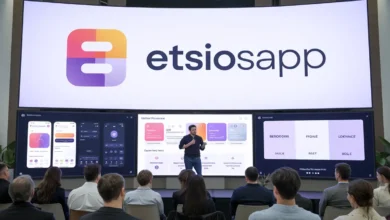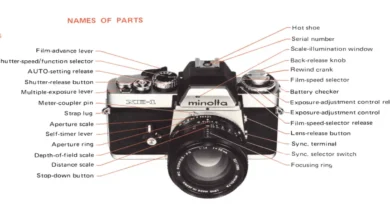How to Effortlessly Set Up a Local LMM Novita AI: Your Ultimate Guide to Mastering Language Models

Setting up a local how to set up a local LMM Novita AI can be an exciting journey, especially for those looking to leverage advanced language models for various applications. Whether you’re interested in creating chatbots, enhancing customer support, or generating content, Novita AI offers a robust platform to meet your needs. In this article, we’ll guide you through the process of how to set up a local LMM Novita AI, ensuring you have all the necessary information to get started smoothly.
Understanding Novita AI and Its Benefits
Before diving into the setup process, it’s essential to grasp what Novita AI is and the advantages of running it locally. Novita AI is a sophisticated language model that utilizes deep learning techniques to understand and generate human-like text. Deploying it locally offers several benefits, including enhanced privacy, reduced latency, and the ability to customize the model to fit your specific requirements.
One of the primary advantages of using Novita AI locally is the control it offers over your data. When you run the model on your hardware, you can manage the data it processes, ensuring that sensitive information remains secure How to Set Up a Local LMM Novita AI. This is particularly important for businesses that handle confidential customer information or proprietary data. Additionally, local deployment can lead to faster response times since you’re not reliant on external servers, which is crucial for applications requiring real-time interactions.
Moreover, setting up a local LMM Novita AI allows for greater customization. How to Set Up a Local LMM Novita AI You can fine-tune the model based on your unique dataset, making it more relevant to your specific use case. Whether you’re developing a customer support bot or a content creation tool, having a tailored model can significantly enhance performance and user satisfaction. This flexibility is one of the key reasons many developers and businesses opt for a local setup.
Prerequisites for Setting Up Novita AI
Before you begin the setup process, there are a few prerequisites to consider. First and foremost, ensure that your hardware meets the necessary specifications How to Set Up a Local LMM Novita AI. Running a local LMM Novita AI requires a decent amount of computational power, particularly if you plan to use larger models. Ideally, you should have a machine with a multi-core CPU, a minimum of 16GB of RAM, and a dedicated GPU for optimal performance. This setup will help you avoid performance bottlenecks and ensure smooth operation.
In addition to hardware requirements, you’ll need to install specific software dependencies. This typically includes Python and libraries such as TensorFlow or PyTorch, depending on the version of Novita AI you are using. Make sure to have a package manager like pip or conda ready to install these libraries easily. Having the right software environment is crucial for the successful execution of the model.
Lastly, familiarize yourself with the command line interface (CLI) if you haven’t already. Many of the setup and configuration steps will require you to execute commands in the terminal, so having a basic understanding of how to navigate and execute commands will be beneficial. This knowledge will save you time and frustration as you work through the setup process How to Set Up a Local LMM Novita AI.
Downloading Novita AI
Once you have your prerequisites in place, the next step is to download the Novita AI model. Depending on the version you are using, you may find the model available on the official Novita AI website or a repository like GitHub. It’s crucial to download the correct version that aligns with your hardware and software setup. Always check for the latest version to ensure you have access to the most recent features and improvements.
When downloading, pay attention to the model size. Larger models can provide better performance but will require more resources. If you’re starting, you might want to consider downloading a smaller version to test the waters before committing to a more extensive setup How to Set Up a Local LMM Novita AI. This approach allows you to familiarize yourself with the model’s capabilities without overwhelming your system.
After downloading, extract the files to a designated directory on your machine. This will be the location where you’ll run the model and store any related data How to Set Up a Local LMM Novita AI. Keeping your workspace organized will help streamline the setup process and make it easier to manage your files later on. A well-structured directory will also facilitate easier troubleshooting if you encounter any issues during setup.
Setting Up the Environment

With the model downloaded, it’s time to set up your environment. This step is crucial for ensuring that all dependencies are correctly installed and that your system is configured to run Novita AI smoothly. Start by creating a virtual environment using a tool like venv or conda How to Set Up a Local LMM Novita AI. This will help isolate your project’s dependencies from other Python projects on your machine, preventing potential conflicts.
To create a virtual environment using venv, open your terminal and navigate to the directory where you extracted Novita AI. Then, run the following command:
bashVerifyOpen In EditorRunCopy code1python -m venv novita_env Once the environment is created, activate it. On Windows, you can do this by running:
bashVerifyOpen In EditorRunCopy code1novita_env\Scripts\activate On macOS or Linux, use:
bashVerifyOpen In EditorRunCopy code1source novita_env/bin/activate
2`` With your virtual environment activated, you can now install the necessary dependencies. Use pip to install the required libraries, which may include TensorFlow, PyTorch, and any other packages specified in the Novita AI documentation. For example:
3
4```bash
5pip install tensorflow How to Set Up a Local LMM Novita AI Make sure to check the documentation for any additional libraries you might need. Installing these dependencies in a virtual environment helps keep your project organized and ensures that you have the correct versions of each library.
Configuring Novita AI
After setting up your environment, the next step is to configure Novita AI. This involves adjusting settings to optimize the model for your specific use case How to Set Up a Local LMM Novita AI. Configuration files are typically included with the model download, and you will need to edit these files to suit your requirements. Look for a configuration file, often named config.json or similar, and open it in a text editor.
In the configuration file, you can specify various parameters, such as the model size, learning rate, and other hyperparameters that affect the model’s performance. Understanding what each parameter does is essential, as this will allow you to fine-tune the model effectively. For instance, if you are working with a smaller dataset, you might want to adjust the learning rate to prevent overfitting.
Once you have made the necessary changes, save the configuration file and ensure that it is in the same directory as your model files. This will allow Novita AI to access the configuration settings when it starts up. Proper configuration is key to achieving optimal performance from your local instance of Novita AI.
Running Novita AI Locally
With everything set up and configured, it’s time to run Novita AI locally. Open your terminal, navigate to the directory where you have your model and configuration files, and execute the command to start the model How to Set Up a Local LMM Novita AI. The command may vary depending on the specific implementation of Novita AI you are using, but it typically looks something like this:
bashVerifyOpen In EditorRunCopy code1python run_novita.py --config config.json This command tells the system to run the Novita AI script using the specified configuration file. Once you execute the command, you should see output in the terminal indicating that the model is loading. Depending on the size of the model and your hardware, this process may take some time.
After the model has loaded, you can start interacting with it. Many implementations provide a command-line interface or a web-based interface for you to input text and receive responses. Experiment with different prompts to see how the model performs and to get a feel for its capabilities How to Set Up a Local LMM Novita AI.
Testing Your Setup
Once Novita AI is running, it’s crucial to test your setup to ensure everything is functioning as expected. Start by inputting simple queries and observing the responses. This will help you gauge the model’s understanding and performance. If you notice any issues, such as slow response times or unexpected outputs, it may be necessary to revisit your configuration settings or check for any missing dependencies.
Additionally, some benchmark tests should be considered to evaluate the model’s performance under different loads. This can help you identify any bottlenecks in your setup and make necessary adjustments. Testing is an essential step in the setup process, as it ensures that your local instance of Novita AI is ready for real-world applications.
Fine-Tuning Novita AI

One significant advantage of running Novita AI locally is the ability to fine-tune the model based on your specific dataset. Fine-tuning allows you to adapt the model better to understand the nuances of your particular use case, whether that’s customer support, content generation, or any other application. To begin fine-tuning How to Set Up a Local LMM Novita AI, you’ll need a dataset that reflects the type of interactions you expect the model to handle.
Prepare your dataset in a format compatible with Novita AI. This often involves structuring the data into input-output pairs, where the input is the prompt you want the model to respond to, and the output is the desired response. Once your dataset is ready, you can initiate the fine-tuning process by running a training script provided with the Novita AI package.
The command for fine-tuning typically looks like this:
bashVerifyOpen In EditorRunCopy code1python fine_tune.py --data your_dataset.json --config config.json During the fine-tuning process, monitor the training metrics to ensure that the model is learning effectively. You may need to adjust hyperparameters such as the learning rate or batch size based on the model’s performance during training. Fine-tuning can significantly enhance the model’s relevance and accuracy for your specific application How to Set Up a Local LMM Novita AI.
Deploying Novita AI for Production Use
After successfully setting up and fine-tuning your local instance of Novita AI, you can deploy it for production use. This involves making the model accessible to users, whether through a web application, API, or other interfaces How to Set Up a Local LMM Novita AI. Depending on your requirements, you might need to implement additional features such as user authentication, logging, and error handling.
If you’re deploying Nov ita AI as a web application, consider using frameworks like Flask or FastAPI to create a user-friendly interface How to Set Up a Local LMM Novita AI. These frameworks allow you to build RESTful APIs that can interact with your model, enabling users to send requests and receive responses seamlessly.
To deploy your application, you’ll need to ensure that your server environment is properly configured. This includes setting up a web server, such as Nginx or Apache, to handle incoming requests and route them to your application. Additionally, consider using a process manager like Gunicorn or uWSGI to manage your application’s processes, ensuring that it can handle multiple requests simultaneously without crashing.
Once your application is deployed, it’s essential to monitor its performance and gather user feedback. This will help you identify areas for improvement and ensure that your local LMM Novita AI continues to effectively meet user needs How to Set Up a Local LMM Novita AI. Regular updates and maintenance will also be necessary to keep the model performing optimally and incorporate any new features or improvements.
Troubleshooting Common Issues
As with any software setup, you may encounter issues while setting up or running Novita AI locally. Here are some common problems and their solutions:
- Installation Errors: If you run into issues during the installation of dependencies, ensure that you are using the correct version of Python and that your package manager is up to date. Sometimes, specific libraries may have compatibility issues, so checking the documentation for version requirements can be helpful.
- Performance Issues: If the model is running slowly or not responding as expected, check your hardware specifications. Ensure that your machine meets the recommended requirements for running Novita AI. Additionally, monitor your system’s resource usage to identify any bottlenecks.
- Configuration Problems: If the model fails to load or produces unexpected outputs, revisit your configuration settings. Ensure that all paths are correct and that the configuration file is properly formatted. Sometimes, a small typo can lead to significant issues How to Set Up a Local LMM Novita AI.
- Fine-Tuning Challenges: If the fine-tuning process is not yielding the desired results, consider revisiting your dataset. Ensure that it is diverse and representative of the types of interactions you expect. You may also need to experiment with different hyperparameters to achieve better performance.
- Deployment Issues: If you encounter problems while deploying your application, check your server logs for error messages. These logs provide valuable insights into what is going wrong. Additionally, ensure that your firewall settings allow traffic to your application.
Conclusion on How to Set Up a Local LMM Novita AI
Setting up a local LMM Novita AI can be a rewarding experience, providing you with a powerful tool for various applications. By following the steps outlined in this article, you can successfully install, configure, and deploy Novita AI to meet your specific needs. Remember to take advantage of the customization options available to you, as this will enhance the model’s performance and relevance to your use case.
As you continue to work with Novita AI, don’t hesitate to explore its capabilities further How to Set Up a Local LMM Novita AI. The world of language models is constantly evolving, and staying updated with the latest developments will help you make the most of this technology. Whether you’re building chatbots, content generators, or any other application, Novita AI has the potential to transform the way you interact with language and data. Happy coding!



